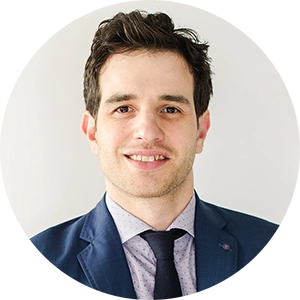*(The examples provided below are composite cases, synthesizing disguised information and not any patient in particular)*
With 2021 upon us, the topic of what is your New Year’s resolution often comes up. Unbeknownst to some, New Year’s resolutions have been around for thousands of years. While they’ve taken many forms, New Year’s resolutions now are made by individuals as a form of self-improvement for the upcoming year. Individuals use this time to reassess what goals they would like to implement to improve the quality of their lives. They use this as an opportunity to work on things like quitting smoking, giving up pop, working out, etc. However, the number of people who set out with New Year’s resolutions often cannot follow through with them. It’s estimated that 45-50% of Americans set New Year’s resolutions, but only 8-10% keep them up for more than a few months. So, what happens? Individuals sometimes set resolutions hoping that upon achieving their goals, all of their problems would go away. For these individuals, they subconsciously view New Year’s resolutions as a form of distraction. One of the main reasons individuals give up on their New Year’s resolutions is they’re expecting instant results. This results in them pushing themselves beyond their limits and getting disappointed when their expectations don’t match with reality.
To give you some insight into what happens, I want to introduce you to a client named Joe.
Joe is in his mid-30s. He struggles with issues related to anxiety and wanted to start exercising for his New Year’s resolution. Joe enjoyed running growing up and figured that was an excellent place to start. In session, Joe stated that he hasn’t exercised for the last two years, so he will start slow and update me on his progress. The next week Joe informed me that he was dealing with shin splints and couldn’t exercise for 2-3 weeks. When discussing what happened, Joe stated that he wanted to run for a mile for his first run. However, Joe decided that a mile wasn’t enough during his run and ended up running for 6 miles. When asked why he did that, Joe stated that he wanted to push himself and was hoping for quick results. Joe felt that if he was able to accomplish the 6 mile run, he would be that much closer to getting rid of his symptoms of anxiety.
What if you’re like Joe and want to do something? But you don’t know where to start and have to deal with issues stemming from Covid?
- Set realistic goals.
- Understand the purpose of your goals. Having a purpose gives a clear mindset at the beginning of your journey towards improving yourself. This makes it more likely to stick with your practice, especially during these difficult times.
- Start slowly and gradually pick your pace.
- Celebrate your progress, even if it’s incremental. If you haven’t exercised for the past year due to Covid, you’re not alone. However, the great thing is that they’re plenty of things you can do. One way you can start exercising is by walking. But how can I start? Look at step 3. Start slowly and gradually pick up your pace. So, if you were able to walk once in the past week, it’s not a bad thing. It’s the opposite! You’re that much closer to reaching your goal than you were the week before.
- If the talk of resolutions combined with Covid is too much for you, it’s okay. We’re all limited in our capabilities. Reaching out to the therapist to discuss these issues can be a huge first step towards self-improvement.

Author: Anton Babushkin, PhD
Looking for a Therapist? Start My Wellness has highly experienced Licensed Therapists that are currently accepting new patients.


